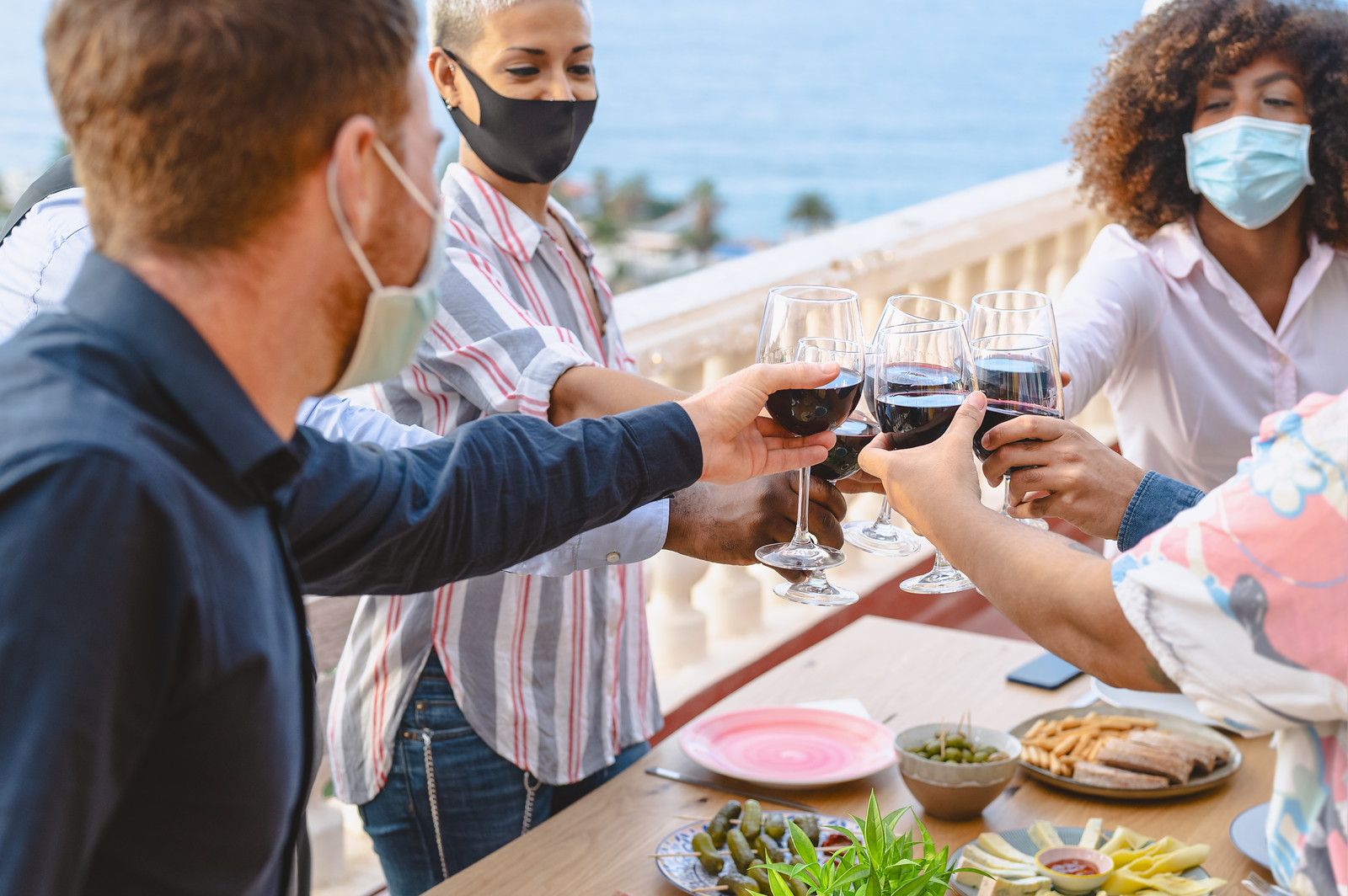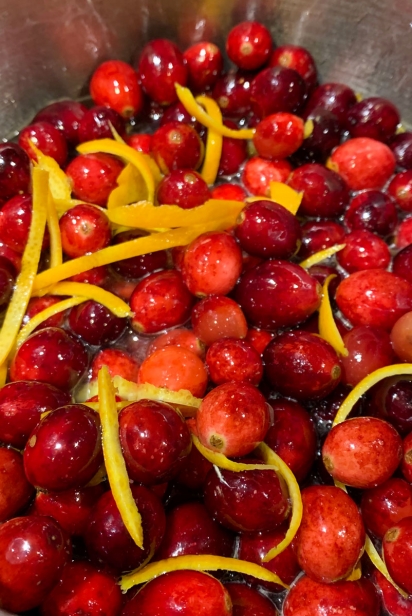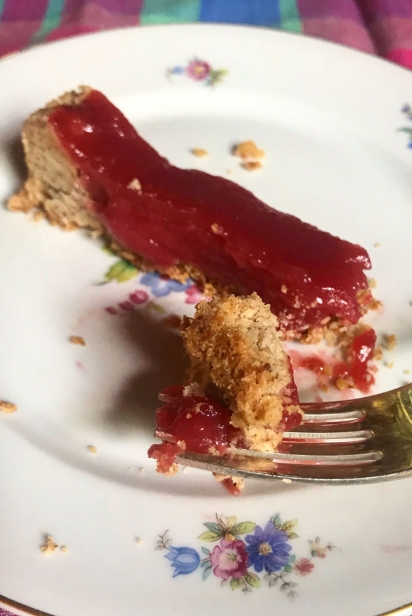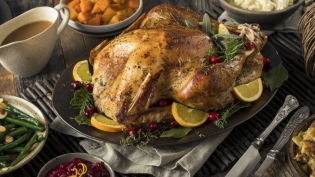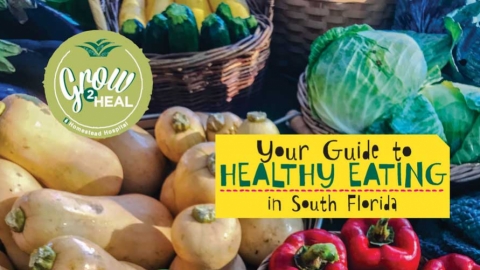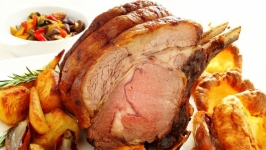How to Host a Safe Holiday Gathering
Thanksgiving is around the corner. It’s time to start thinking about what kind of turkey to make, the best wines to serve – and whether you’re going to invite anyone outside of your immediate household to dinner.
Should you call off hosting all 2020 holidays? Make them virtual gatherings? Or just throw a big family get-together, coronavirus be damned?
Welcome to gatherings in the time of COVID-19. Everyone has to decide what’s best according to their circumstances, experts say – including the tough (but safe) choice to skip such gatherings altogether this season. If that's unthinkable, consider spending your holiday only with your household, and not inviting anyone from the outside. Or you could host a virtual event, connecting with loved ones online.
With more than 1 million COVID-19 cases reported in the United States over the past week, the Centers for Disease Control and Prevention (CDC) says the safest way to celebrate Thanksgiving is at home with the people you live with.
What’s right to do depends on what risks you’re willing to tolerate, says Dr. Mary Jo Trepka, chair of the department of epidemiology at FIU. You should factor in the current uptick in infections, which has been “worrisome” over the past few weeks, she says. “These are the numbers we were seeing in the summertime,” she says. “COVID hasn’t left.”
What's the Best Choice?
First, make a family risk assessment and consider guests who might be especially vulnerable to the virus. “Who’s going to be at the celebration? Do they have risk factors like lung disease or obesity? Are they elderly?” she says.
Whether to invite older family members can be a tough call, says Dr. Cindy Prins, assistant professor of epidemiology at the University of Florida. “It’s so hard for older folks with the time they have left. Kids want to say hi to their grandparents, and we want their interactions. They can wear masks, give a hug, then step away. Don’t hold on too long.”
Other strategies include requiring all guests to take COVID tests beforehand, or self-quarantining to avoid exposure for two weeks before your gathering, Dr. Prins says. This Thanksgiving, that’s Nov. 12.
Fresh Air, Distance, and – Yes – Masks On
If you decide to host an event, there are a number of ways to make it safer. One solution ideally suited for South Florida is outdoor dining. “Fresh air helps,” says Dr. Prins. “If you have to dine inside, open your windows.”
Inside and outside, ask guests to maintain a distance of six feet. Set up small tables or eating areas rather than seating everyone at a large communal table. Seat people from different households six feet apart.
And make sure everyone wears a mask, even at home. Both doctors recommend that everyone wear a mask, removing it only for eating or drinking.
“Yes, it’s weird, inconvenient and makes it harder to speak,” says Dr. Trepka. "But all should wear masks.”
Keeping surfaces clean is a good food safety practice, although COVID-19 is not foodborne. “Cleaning is easy to do, but don’t obsess over it,” says Dr. Prins. Wipe down “refrigerator handles, oven handles, high-touch surfaces,” she says. “Wash your hands.”
What About Virtual Potlucks?
“Thanksgiving is definitely going to be looking different for everyone,” says Natalie D. Castro, MS, RDN, wellness and clinical nutrition manager at Baptist Health. “My husband and I are still are not ready to have family gatherings, and this is still something that Baptist Health does not recommend.”
A virtual potluck might be just the ticket during COVID-19, says Castro. She runs a gluten-free group support for families dealing with digestive disorders like celiac disease and gluten intolerance. This year, the group, which has hosted an annual gluten-free potluck for the past 10 years at Baptist Hospital, is doing a virtual Thanksgiving potluck instead. “We will feature one recipe that we will all cook together," she says. "Everyone will make their own additional dishes and treats to have at home, and we will share recipes and stories together from the safety of our own home.”
For her family's Thanksgiving, they’re planning a food exchange. “We will each cook a small dish and drop it off at each other’s home. Then we will have a virtual family dinner with everyone’s dishes,” Castro says.
Pack It Up Safely
If you decide to do a food exchange or pack up foods and leftovers for guests, follow safety guidelines – you don’t want anyone getting food poisoning. “Keep cold foods cold (under 40 degrees F) and hot foods hot (over 140 degrees F),” says Baptist Health wellness dietitian Terry Ochoa, MS, RDN, who's also on the Healthy Homestead team. “Foodborne pathogens thrive and multiply quickly in what’s known as the temperature danger zone of 40-140 degrees Fahrenheit.” Here are Ochoa’s food safety tips:
• Portion out cooked foods, such as soups and casseroles, in shallow containers and cut up turkey and lechón into smaller pieces for faster cooling. Place in the refrigerator or freezer promptly to avoid bacterial growth.
• Package foods in airtight containers.
• Use dry ice or cold packs to maintain the temperature. For added protection, consider an insulated cooler or other form of insulated packaging.
• Provide instructions for safe thawing and proper heating time and temperature.
• Cooked foods and perishable cold foods like casseroles, deli meats, creamy salads are to be consumed within two hours of coming out of the cooking appliance or refrigerator.
• Discard foods left out longer than two hours. If room temperature is higher than 89 degrees, discard food within one hour.
Shop for packaging materials – containers, cold packs, insulated bags – before the holidays to avoid last-minute scrambling.
Healthy Choices
For many, the holidays are a time to put diets on pause. “The holidays bring us a lot of different foods we want to enjoy and there’s nothing wrong with enjoying them,” says Baptist Health's Castro.
But if you’re struggling with the “quarantine 15,” you may want to focus on healthier choices for holiday meals. “Many people have been stressed with the extra weight that COVID has brought them,” says Castro. “We can keep dishes on the healthier side by simply doing healthy ingredient swaps.” Some ideas include:
• Use less butter and sugar in general. For baking, use recipes that call for applesauce or banana as sweeteners.
• Instead of canned cranberry sauce, make homemade from fresh cranberries sweetened with fresh oranges and honey or 100% maple syrup.
• Instead of canned candied yams, toss roasted fresh yams lightly in maple syrup.
• For dips, use Greek yogurt instead of sour cream.
• Instead of green bean casserole made from canned soup, try steamed fresh green beans tossed in olive oil and a homemade mushroom sauce.
• Practice moderation if you’re drinking alcohol. Liquid calories add up quickly, especially during the holidays.
• Enjoy a smaller pieces of dessert.


